Guohua Geng
P-MSDiff: Parallel Multi-Scale Diffusion for Remote Sensing Image Segmentation
May 30, 2024



Abstract:Diffusion models and multi-scale features are essential components in semantic segmentation tasks that deal with remote-sensing images. They contribute to improved segmentation boundaries and offer significant contextual information. U-net-like architectures are frequently employed in diffusion models for segmentation tasks. These architectural designs include dense skip connections that may pose challenges for interpreting intermediate features. Consequently, they might not efficiently convey semantic information throughout various layers of the encoder-decoder architecture. To address these challenges, we propose a new model for semantic segmentation known as the diffusion model with parallel multi-scale branches. This model consists of Parallel Multiscale Diffusion modules (P-MSDiff) and a Cross-Bridge Linear Attention mechanism (CBLA). P-MSDiff enhances the understanding of semantic information across multiple levels of granularity and detects repetitive distribution data through the integration of recursive denoising branches. It further facilitates the amalgamation of data by connecting relevant branches to the primary framework to enable concurrent denoising. Furthermore, within the interconnected transformer architecture, the LA module has been substituted with the CBLA module. This module integrates a semidefinite matrix linked to the query into the dot product computation of keys and values. This integration enables the adaptation of queries within the LA framework. This adjustment enhances the structure for multi-head attention computation, leading to enhanced network performance and CBLA is a plug-and-play module. Our model demonstrates superior performance based on the J1 metric on both the UAVid and Vaihingen Building datasets, showing improvements of 1.60% and 1.40% over strong baseline models, respectively.
Unsupervised Segmentation for Terracotta Warrior with Seed-Region-Growing CNN(SRG-Net)
Jul 28, 2021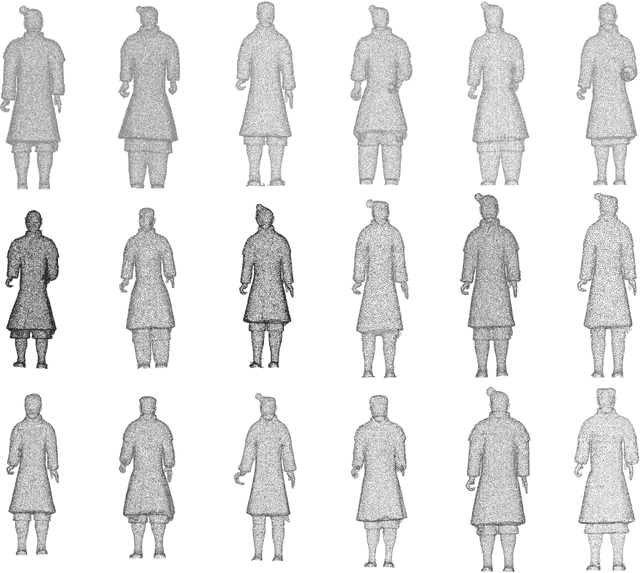
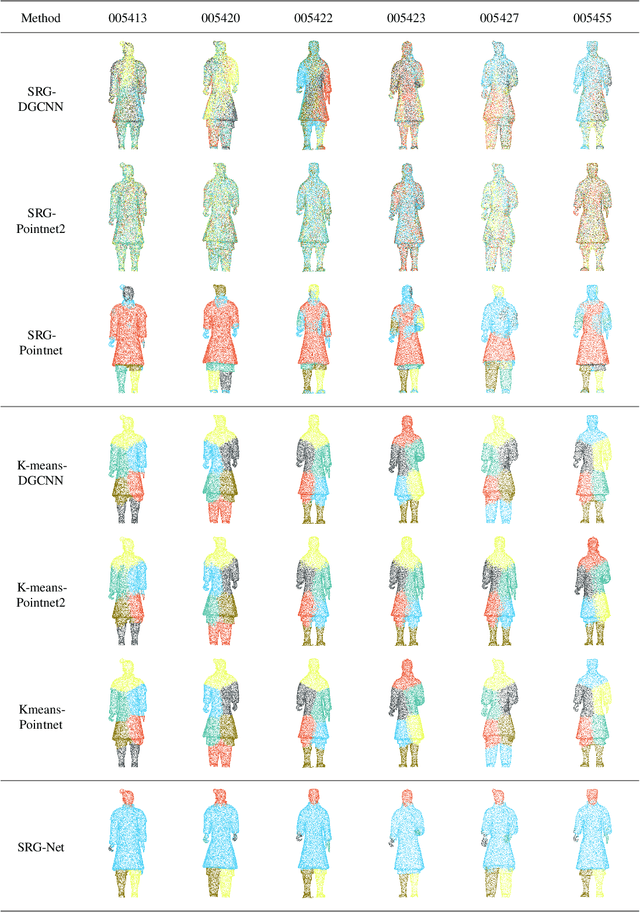
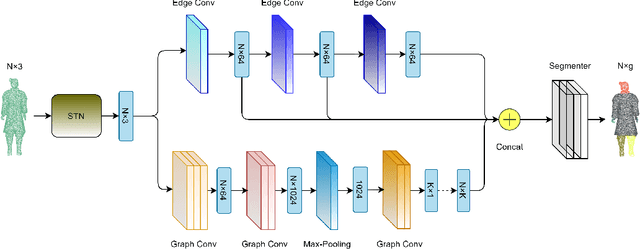
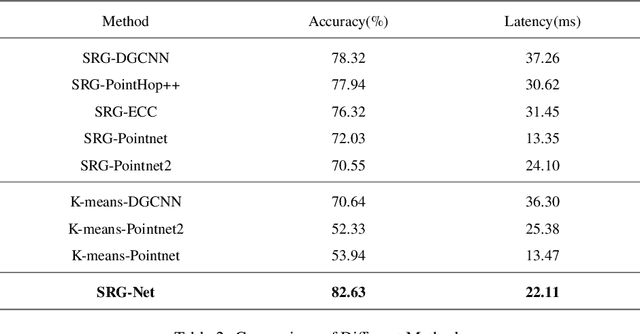
Abstract:The repairing work of terracotta warriors in Emperor Qinshihuang Mausoleum Site Museum is handcrafted by experts, and the increasing amounts of unearthed pieces of terracotta warriors make the archaeologists too challenging to conduct the restoration of terracotta warriors efficiently. We hope to segment the 3D point cloud data of the terracotta warriors automatically and store the fragment data in the database to assist the archaeologists in matching the actual fragments with the ones in the database, which could result in higher repairing efficiency of terracotta warriors. Moreover, the existing 3D neural network research is mainly focusing on supervised classification, clustering, unsupervised representation, and reconstruction. There are few pieces of researches concentrating on unsupervised point cloud part segmentation. In this paper, we present SRG-Net for 3D point clouds of terracotta warriors to address these problems. Firstly, we adopt a customized seed-region-growing algorithm to segment the point cloud coarsely. Then we present a supervised segmentation and unsupervised reconstruction networks to learn the characteristics of 3D point clouds. Finally, we combine the SRG algorithm with our improved CNN using a refinement method. This pipeline is called SRG-Net, which aims at conducting segmentation tasks on the terracotta warriors. Our proposed SRG-Net is evaluated on the terracotta warriors data and ShapeNet dataset by measuring the accuracy and the latency. The experimental results show that our SRG-Net outperforms the state-of-the-art methods. Our code is shown in Code File 1~\cite{Srgnet_2021}.
SRG-Net: Unsupervised Segmentation for Terracotta Warrior Point Cloud with 3D Pointwise CNN methods
Dec 01, 2020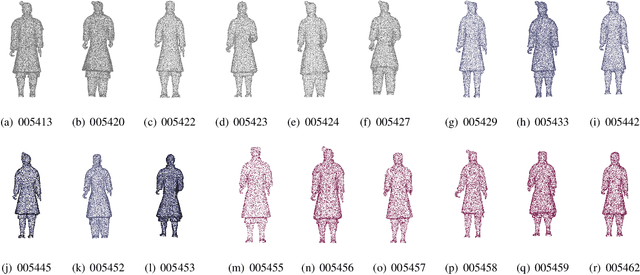
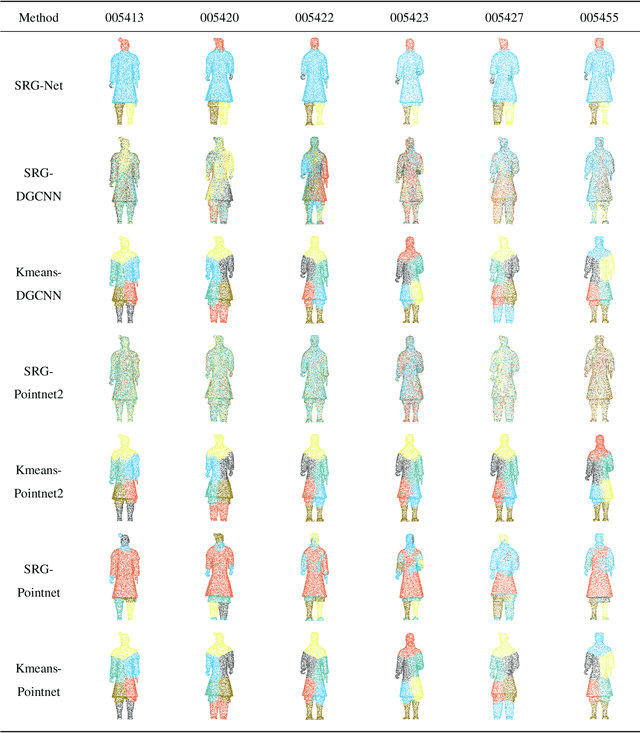
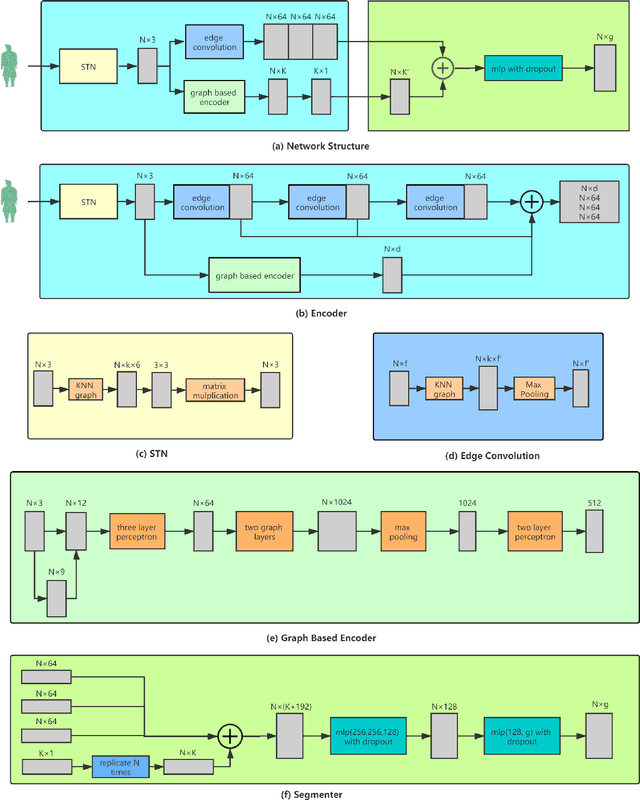
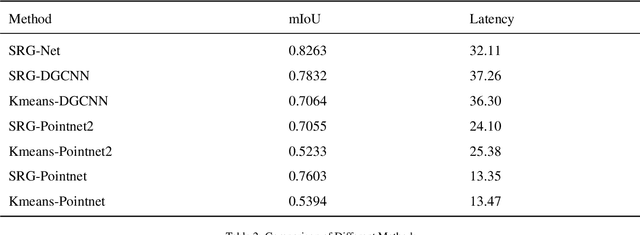
Abstract:In this paper, we present a seed-region-growing CNN(SRG-Net) for unsupervised part segmentation with 3D point clouds of terracotta warriors. Previous neural network researches in 3D are mainly about supervised classification, clustering, unsupervised representation and reconstruction. There are few researches focusing on unsupervised point cloud part segmentation. To address these problems, we present a seed-region-growing CNN(SRG-Net) for unsupervised part segmentation with 3D point clouds of terracotta warriors. Firstly, we propose our customized seed region growing algorithm to coarsely segment the point cloud. Then we present our supervised segmentation and unsupervised reconstruction networks to better understand the characteristics of 3D point clouds. Finally, we combine the SRG algorithm with our improved CNN using a refinement method called SRG-Net to conduct the segmentation tasks on the terracotta warriors. Our proposed SRG-Net are evaluated on the terracotta warriors data and the benchmark dataset of ShapeNet with measuring mean intersection over union(mIoU) and latency. The experimental results show that our SRG-Net outperforms the state-of-the-art methods. Our code is available at https://github.com/hyoau/SRG-Net.
 Add to Chrome
Add to Chrome Add to Firefox
Add to Firefox Add to Edge
Add to Edge